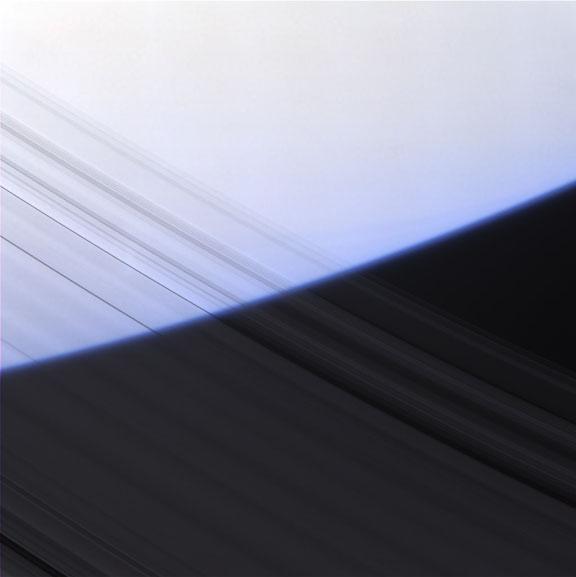Data
analysis from the Cassini space
probe reveals that there might be
more rings around Saturn than meet
the eye.Scientists from the Max Planck Institute have found what might be
partial rings surrounding the giant gas planet in a nearly invisible
collection of small arc segments. Using Cassini's onboard magnetospheric
sensors, the research team found that there are two areas near Saturn where
highly energetic electrons suddenly drop out Ė presumably because something is
absorbing them.
In March 2008, the Cassini team
reported a similar discovery using the same instrument, except then it was
to announce a ring structure orbiting the moon Rhea.
Moons absorb subatomic particles such as electrons. When the magnetospheric
imager sensed a fall in the energy emissions from the toroid of ions that
surrounds Saturn, the conclusion was that some other object invisible to optical
instruments might be acting like the rings around Rhea. When the proposed ring
arc segments are oriented between Cassini and the electron flow, the readings
suddenly fall to zero. Because the region of absorption is almost 3000
kilometers wide, Cassini mission analysts speculate that there could be unseen
rings in
several bands.
Researchers surmise that the ring segments are probably being supported by
material that is eroded from the surface of some small moons by meteor impacts.
The resulting dust could be flung into the plasmasphere around Saturn in much
the same way as debris from Tethys and Dione (as well as Phoebe and Iapetus) is
being drawn into the great Saturnian electrical circuit.
As Elias Roussos of Max Planck said, "What's odd is that these inferred ring
arcs still remain undetected in Cassini images, while the rings at Janus,
Epimetheus and Pallene orbits, thought to form under the same process, are
visible. This means the dust grains making up these two different classes of
rings have different characteristics and sizes. However the reason behind this
difference is a mystery."
One of the most important reasons that information sent from Cassini is so often
described as "mysterious" or "baffling" to NASA scientists is that they see each
of the reports as a separate phenomena instead of seeing a suite of individual
aspects that describe one source. Electricity provides a single point of
investigation into the "anomalies" that have been observed within Saturn's field
of influence: hot spots at the poles,
mega-lightning, the spokes that seem to float above the ring system, the
plasma torus, Saturnís radiation belt, the ultra-fast rotation of Saturnís
atmosphere and X-rays shining from the rings.
The invisible rings are most likely another manifestation of the electrical
environment that exists near Saturn. Planets with magnetic fields can trap hot
particles to form giant electrified clouds. NASA scientists have noted that
Saturn's magnetic field bends around Enceladus "due to electric currents
generated by the interaction of atmospheric particles and the magnetosphere of
Saturn." Further flattening of the plasma torus on the sunward side demonstrates
an electrical (not mechanical) effect is occurring between Saturn and the sun.
What Cassini is detecting most likely supports the charged particle stream
hypothesis. In 1913 Kristian Birkeland wrote about Saturn's rings: "It seems
almost incredible that such a ring of cosmic dust should be able to exist for
ever, so to speak, without other governing forces than gravitation..."
Gravity-only models of the solar system insist that Saturn's rings can only be
created, held and shaped by the activity of "shepherd moons" and angular
momentum. Instead, we should look to the electrical force that is orders of
magnitude more powerful.
By Stephen Smith







